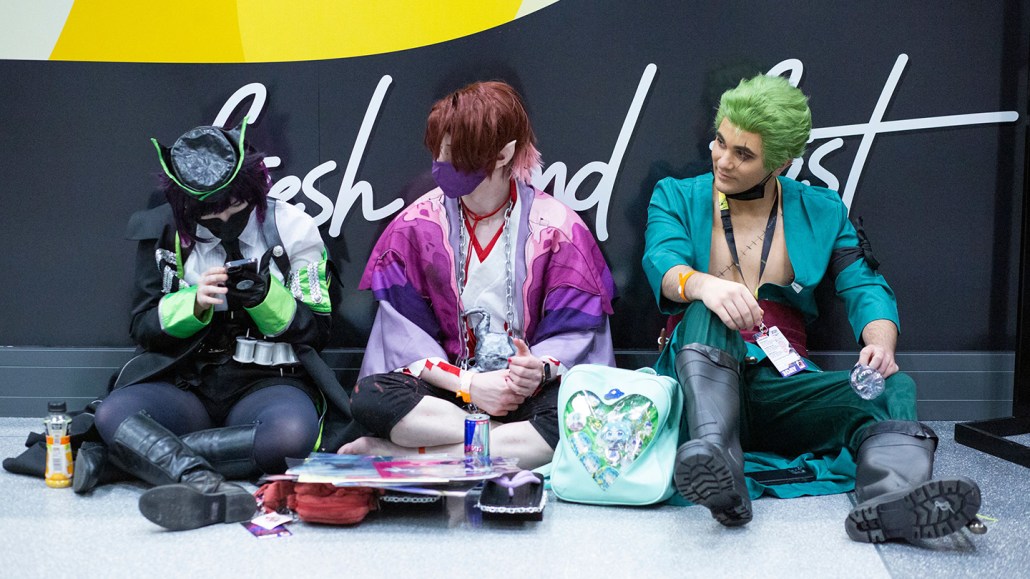An anime convention in November was not an omicron superspreader event
Vaccines, ventilation and other measures probably prevented the virus’ spread, two studies say

At Anime NYC, a convention held in late November, 53,000 fans of Japanese comics and cartoons gathered — many of them wearing costumes inspired by their favorite characters. The event was considered a potential superspreader event for the omicron variant after cases were linked to attendees.
KENA BETANCUR/AFP via Getty Image
- More than 2 years ago
A large anime fan convention held in New York City last November was not an omicron superspreading event despite cases of the highly contagious variant linked to the gathering, researchers report in two studies in the Feb. 18 Morbidity and Mortality Weekly Report.
Vaccination and masking requirements, social distancing and improved ventilation at the event venue probably reduced transmission, the researchers say. The event also benefitted from timing, as it occurred at the very beginning of the city’s omicron wave when community transmission was low.
In early December, the Minnesota public health department sounded the alarm about Anime NYC, a convention celebrating Japanese comics and cartoons that drew attendees from across the United States and 30 other countries. The state agency had identified that Peter McGinn, a Minnesota resident, had attended the event while infected with omicron.
This was only the second omicron case identified in the United States — and media reports labeled the 53,000-person convention as a potential superspreader event when several of McGinn’s friends, who had also attended the convention, tested positive.
But two parallel investigations into the convention failed to find any omicron transmission outside of this group. Contact tracers interviewed McGinn as well as 22 of the 29 friends in his convention group and their household contacts. Meanwhile, a second group of researchers used data from convention organizers to search state and local health databases for positive coronavirus tests among event attendees. The search turned up 4,560 results, 119 (or 2.6 percent) of which were positive.
Among those 119 attendees, only 16 cases were tied to McGinn and his friends. Five of the 16 cases were sequenced, and all were identified as omicron. Outside of that cluster, 15 other sequenced cases were identified as delta.
Sign up for our newsletter
We summarize the week's scientific breakthroughs every Thursday.
Because fewer than 1 in 5 positive test specimens tied to the convention were sequenced, additional positive results could have been omicron, besides the five identified ones. But the event did not spur widespread omicron transmission, the researchers found; the test positivity rate among attendees was similar to the rate in New York City as a whole in the week after the convention, about 3 percent.
“It’s nice to confirm that the event wasn’t a spreader event,” McGinn said in an e-mail. “It makes me more comfortable in the future going to these types of events as long as mask and vax requirements are in place.”
The researchers also found that attendees who tested positive for any version of the coronavirus were more likely to have socialized outside the convention itself. For instance, 18.8 percent of positive attendees had attended karaoke venues in the city, compared with 2.4 percent of attendees who tested negative.
Omicron has spread readily at holiday parties, weddings and even between rooms in a hotel used for coronavirus quarantines. The researchers attribute the lack of spread at the anime convention to layers of safety measures, including a vaccination requirement (at least one dose) for attendees, required masks and improved ventilation. The Javits Center, where the event took place, has installed HEPA air filters across the building, among other safety measures; at previous points in the pandemic, it was used as a COVID-19 hospital and mass vaccination site.
But the new reports include limited detail about the impact that these filters had on actual air quality at the venue, says Krystal Pollitt, an epidemiologist and environmental health expert at Yale University. Without specific airflow measurements, she says, “it’s hard to know how much difference” the filters made.
Additionally, Anime NYC had “a fortunate coincidence” in its timing, says Ayman El-Mohandes, an epidemiologist and dean of the public health school at the City University of New York. Omicron was first identified in New York City wastewater samples on November 21, the final day of the convention — placing this event at the very beginning of the city’s outbreak, when community transmission was low.
“Had this same event happened two weeks later, it would’ve been disastrous,” El-Mohandes says. Future large events should add additional layers of safety measures, he says, such as requiring that attendees be fully vaccinated — not just one dose — and test negative prior to the event.







